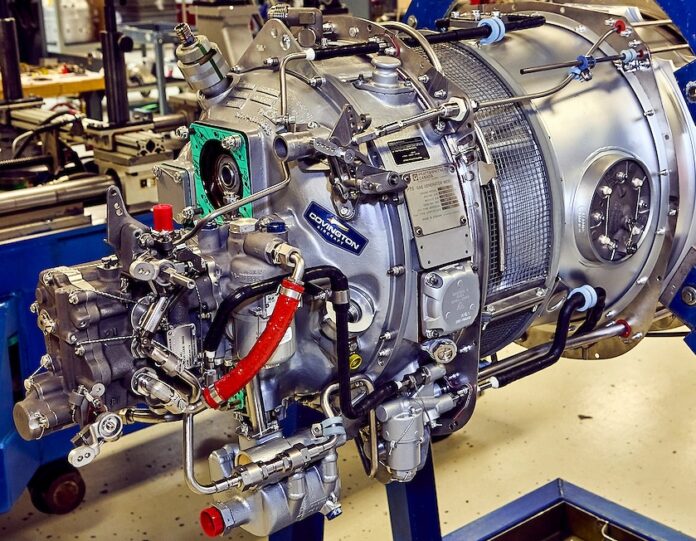If you have been through any PT6A class, you have heard the engine defined as a free turbine, meaning there is no connecting shaft between the compressor and the prop. You have undoubtedly heard that the PT6A is built on a modular concept. The two modules of the engine are the gas generator and the power section. Let’s review the gas generator module and talk about some troubleshooting.
In past articles, we have talked about the accessory gearbox, inlet case, fuel nozzles and hot section. These are sub-modules of the gas generator. This modular concept of the engine allows us to do many maintenance tasks to these sub-modules without having to remove the complete engine from the airframe. The modular design is one of the benefits of the PT6A design.
All the above sub-modules are attached to or inside the gas generator case, along with the compressor. The compressor and bleed valve comprises the cold section and the gas generator assembly. When you look at Ng or N1 in the cockpit, it is the compressor speed that is being monitored. A tach on the accessory gearbox measures this and sends that signal to the gauge. The gas generator case takes all the air from the compressor and delivers it to the engine. I have also written previously about air utilization. On and in the case, there are multiple tubes and connection points for the distribution of air and oil.
What issues do we associate with gas generator problems, and how do we determine where to start looking for answers?
An increase in Ng is one of the most common indicators of a gas generator issue. When the compressor loses efficiency, it must spin faster to make all the air it needs. You may also see increases in fuel flow and T5 that correspond with these issues. The engine is just working harder to produce what you need. My personal maintenance philosophy is to keep things simple and follow a common-sense approach. With that in mind, the first thing that I look at is the air intake. I’m referring to the filtration and inlet screen. I have “fixed” many engine issues by changing the air filter and ensuring the engine inlet screen is clear. Everyone should have a maintenance plan that includes routine evaluations of the air filter. If your filter is in terrible shape at 300 hours, change or inspect it every 200 hours. I know operators who change air filters every 100 hours. Always remember that clean air and clean fuel make for a happy engine. If you find your filter and screen clean, look at the bleed valve. The bleed valve removes excess air from the engine until the engine requires it all. If the bleed valve is stuck in the open position or has a leak, the engine will be working harder to recover that air. P3 leaks on the engine can also cause the same indications. Just remember, if the engine doesn’t have enough air, it will work harder to deliver the power you request.
Other occasional cold section problems include compressor stalls, hooting, vibration and humming. I often tell people that if they listen, the engine will tell them something is wrong. Compressor stalls, a loud banging noise from the compressor area, are caused by too much air between the axial and centrifugal stages. Most commonly, the bleed valve is out of calibration (closing too early) or stuck in the closed position. Vibration and noises can also be caused by foreign object damage (FOD). If you hear something, investigate it. These problems are usually easy to handle, but if ignored, they can have terribly expensive consequences.
The gas generator also houses the hot section. Hot section problems usually present us with increased ITT and fuel flow, with Ng either remaining the same or decreasing. Several causes can be found during routine borescope inspections. High compressor turbine blade tip clearance, vane ring distress, and erosion are typical of problems in the engine’s hot section and can all be viewed with a borescope. Other issues, such as air leakage, cannot be addressed without removing the hot section components. All these issues come with symptoms of higher ITT and fuel flow.
I could extend this article and discuss oil system issues and fuel control troubleshooting, but I feel those two subjects require a more in-depth look and will handle each of those subjects independently. You will have to keep watching for those.
One of the critical components of the troubleshooting we do on the PT6A is understanding the relationship between what the engine is supposed to be doing and what the engine is doing. This is why when you call, we will ask for the results of a ground performance run. This is the best tool to start figuring out what the engine is actually doing. As always, I am here to help in any way I can.
Robert Craymer has worked on PT6A engines and PT6A-powered aircraft for the past three decades, including the last 25+ years at Covington Aircraft. As a licensed A&P mechanic, Robert has held every job in an engine overhaul shop and has been an instructor of PT6A Maintenance and Familiarization courses for pilots and mechanics. Robert can be reached at robertc@covingtonaircraft.com or 662-910-9899. Visit us at covingtonaircraft.com.





